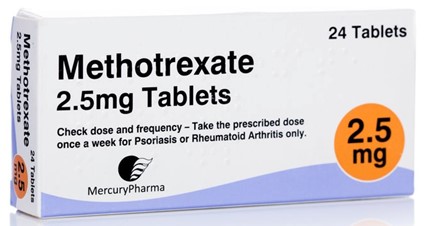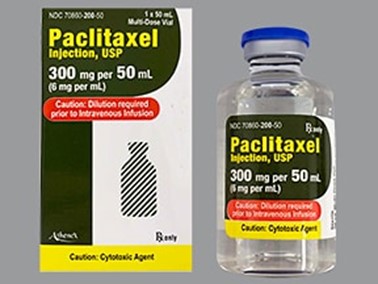Chemotherapy Agents and Oncology Pharmacology > Pharmacology
Exam Review
Cytotoxic Chemotherapy Drugs
Total Questions : 5
Showing 5 questions, Sign in for moreA nurse is caring for a client who is receiving cyclophosphamide, an alkylating agent, as part of chemotherapy for lymphoma. The nurse should monitor the client for which of the following adverse effects of this drug?
Explanation
Choice A reason: Cyclophosphamide is an alkylating agent that can cause damage to the kidneys and bladder, leading to nephrotoxicity and hemorrhagic cystitis. Nephrotoxicity is the impairment of kidney function due to exposure to toxic substances, and hemorrhagic cystitis is the inflammation and bleeding of the bladder wall. The nurse should monitor the client's urine output, specific gravity, blood urea nitrogen, creatinine, and urinalysis for signs of renal impairment and hematuria. The nurse should also encourage the client to drink plenty of fluids, administer mesna (a protective agent), and alkalinize the urine to prevent these complications .
Choice B reason: Cardiotoxicity and extravasation injury are not common adverse effects of cyclophosphamide. Cardiotoxicity is the damage to the heart muscle caused by certain drugs, such as anthracyclines (e.g., doxorubicin) or trastuzumab. Extravasation injury is the leakage of a vesicant drug (a drug that causes tissue damage) into the surrounding tissues, causing pain, swelling, necrosis, and infection. Cyclophosphamide is not a vesicant drug, but vinca alkaloids (e.g., vincristine) or platinum compounds (e.g., cisplatin) are .
Choice C reason: Peripheral neuropathy and pulmonary fibrosis are not common adverse effects of cyclophosphamide. Peripheral neuropathy is the damage to the nerves of the peripheral nervous system, causing numbness, tingling, pain, or weakness in the hands or feet. Pulmonary fibrosis is the scarring of the lung tissue, causing shortness of breath, cough, and reduced oxygen levels. These complications are more likely to occur with drugs such as taxanes (e.g., paclitaxel) or bleomycin .
Choice D reason: Hepatotoxicity and gastrointestinal toxicity are not specific adverse effects of cyclophosphamide. Hepatotoxicity is the damage to the liver cells caused by certain drugs, such as methotrexate or acetaminophen. Gastrointestinal toxicity is the irritation of the mucous membranes of the digestive tract, causing nausea, vomiting, diarrhea, or mucositis. These side effects can occur with many chemotherapy drugs, but they are not unique to cyclophosphamide .

A nurse is administering methotrexate, an antimetabolite, to a client who has osteosarcoma. The nurse should identify that methotrexate can cause which of the following adverse effects? (Select all that apply.)
Explanation
Choice A reason: Methotrexate is an antimetabolite that inhibits the synthesis of DNA and RNA, which are essential for cell division and growth. Methotrexate affects rapidly dividing cells, such as those in the bone marrow, where blood cells are produced. This can lead to bone marrow suppression, which is the reduction of the number and function of blood cells, causing anemia, leukopenia, thrombocytopenia, or pancytopenia. The nurse should monitor the client's complete blood count, signs of infection, bleeding, or fatigue, and administer leucovorin (a rescue agent) to prevent or treat this complication .
Choice B reason: Ototoxicity is not a common adverse effect of methotrexate. Ototoxicity is the damage to the inner ear or auditory nerve caused by certain drugs, such as aminoglycosides (e.g., gentamicin) or loop diuretics (e.g., furosemide). Ototoxicity can cause hearing loss, tinnitus, vertigo, or balance problems .
Choice C reason: Gastrointestinal toxicity is a common adverse effect of methotrexate. Gastrointestinal toxicity is the irritation of the mucous membranes of the digestive tract, causing nausea, vomiting, diarrhea, or mucositis. Methotrexate can also cause hepatotoxicity, which is the damage to the liver cells. The nurse should monitor the client's liver function tests, weight, fluid intake and output, and nutritional status. The nurse should also provide antiemetics, mouth care, hydration, and small frequent meals to prevent or manage this complication .
Choice D reason: Neurotoxicity is not a common adverse effect of methotrexate. Neurotoxicity is the damage to the brain or nervous system caused by certain drugs, such as platinum compounds (e.g., cisplatin) or vinca alkaloids (e.g., vincristine). Neurotoxicity can cause confusion, seizures, peripheral neuropathy, or encephalopathy .
Choice E reason: Skin reactions are a common adverse effect of methotrexate. Skin reactions include rash, pruritus, photosensitivity, alopecia, or erythema multiforme. The nurse should inspect the client's skin regularly, provide skin care, avoid exposure to sunlight or ultraviolet light, and apply sunscreen and moisturizer to prevent or treat this complication .

A nurse is educating a client who has breast cancer and is receiving paclitaxel, a natural product, as part of chemotherapy. The nurse should instruct the client to report which of the following manifestations that indicate peripheral neuropathy?
Explanation
Choice A reason: Hearing loss is not a common side effect of paclitaxel, a natural product that interferes with the growth of cancer cells. Hearing loss may be caused by other factors, such as aging, exposure to loud noises, or ear infections.
Choice B reason: Chest pain and shortness of breath are not signs of peripheral neuropathy, but may indicate cardiac or pulmonary problems. Paclitaxel can cause hypersensitivity reactions, such as flushing, rash, and dyspnea, but these usually occur during or shortly after the infusion.
Choice C reason: Numbness and tingling in the hands and feet are symptoms of peripheral neuropathy, which is a common adverse effect of paclitaxel. Peripheral neuropathy is a condition that affects the nerves that carry messages to and from the brain and spinal cord. Paclitaxel can damage these nerves and cause sensory changes, such as numbness, tingling, burning, or pain. The client should report these symptoms to the provider, as they may require dose adjustment or discontinuation of the drug.
Choice D reason: Redness and swelling at the infusion site are not signs of peripheral neuropathy, but may indicate phlebitis or infiltration. Phlebitis is inflammation of the vein, which can cause pain, warmth, and redness along the vein. Infiltration is leakage of the drug into the surrounding tissue, which can cause swelling, pain, and skin damage. The nurse should monitor the infusion site for these complications and stop the infusion if they occur.

A nurse is caring for a client who has lung cancer and is receiving bleomycin, an antineoplastic antibiotic, as part of chemotherapy. The nurse should assess the client for which of the following signs and symptoms that indicate pulmonary fibrosis?
Explanation
Choice A reason: Cough, dyspnea, and crackles are signs and symptoms of pulmonary fibrosis, which is a serious and potentially fatal adverse effect of bleomycin, an antineoplastic antibiotic that inhibits DNA synthesis in cancer cells. Pulmonary fibrosis is a condition that causes scarring and thickening of the lung tissue, which reduces the lung's ability to exchange oxygen and carbon dioxide. The client should be monitored for pulmonary function tests and chest xrays before and during treatment with bleomycin, and the drug should be discontinued if pulmonary fibrosis develops.
Choice B reason: Nausea, vomiting, and diarrhea are not signs of pulmonary fibrosis, but may occur as common side effects of bleomycin and other chemotherapy drugs. The nurse should provide antiemetic drugs, fluids, and electrolytes to prevent dehydration and electrolyte imbalance in the client.
Choice C reason: Fever, chills, and sore throat are not signs of pulmonary fibrosis, but may indicate infection, which is a risk factor for clients receiving chemotherapy. Chemotherapy drugs can suppress the immune system and make the client more susceptible to infections. The nurse should monitor the client's temperature, white blood cell count, and cultures, and administer antibiotics as prescribed.
Choice D reason: Jaundice, dark urine, and claycolored stools are not signs of pulmonary fibrosis, but may indicate liver damage, which is another possible adverse effect of bleomycin. Bleomycin can cause hepatotoxicity, which is toxicity to the liver cells that can impair the liver's function. The nurse should monitor the client's liver function tests, such as serum bilirubin, alkaline phosphatase, and transaminases, and report any abnormalities to the provider.
A nurse is administering leuprolide, a hormone, to a client who has prostate cancer. The nurse should explain to the client that leuprolide works by:
Explanation
Choice A reason: Blocking the estrogen receptors on the cancer cells and inhibiting their growth is the mechanism of action of tamoxifen, a selective estrogen receptor modulator (SERM) that is used to treat breast cancer. Tamoxifen is not effective for prostate cancer, which is stimulated by testosterone, not estrogen.
Choice B reason: Stimulating the production of testosterone and increasing the sensitivity of the cancer cells to chemotherapy is not the mechanism of action of leuprolide, a hormone that is used to treat prostate cancer. Leuprolide does not increase testosterone, but decreases it. Increasing testosterone would worsen prostate cancer, not improve it.
Choice C reason: Suppressing the secretion of luteinizing hormone and reducing the level of testosterone is the mechanism of action of leuprolide, a gonadotropinreleasing hormone (GnRH) agonist that is used to treat prostate cancer. Leuprolide binds to the GnRH receptors in the pituitary gland and initially stimulates the release of luteinizing hormone (LH) and folliclestimulating hormone (FSH). However, with continuous administration, leuprolide desensitizes the receptors and inhibits the secretion of LH and FSH. This leads to a decrease in the production of testosterone by the testes, which reduces the growth of prostate cancer cells.
Choice D reason: Altering the metabolism of cortisol and inducing apoptosis of the cancer cells is not the mechanism of action of leuprolide, a hormone that is used to treat prostate cancer. Leuprolide does not affect cortisol, but testosterone. Cortisol is a glucocorticoid hormone that regulates stress response, inflammation, and metabolism. Apoptosis is a process of programmed cell death that can be triggered by some chemotherapy drugs, such as cisplatin and doxorubicin.
Sign Up or Login to view all the 5 Questions on this Exam
Join over 100,000+ nursing students using Nursingprepexams’s science-backend flashcards, practice tests and expert solutions to improve their grades and reach their goals.
Sign Up Now

